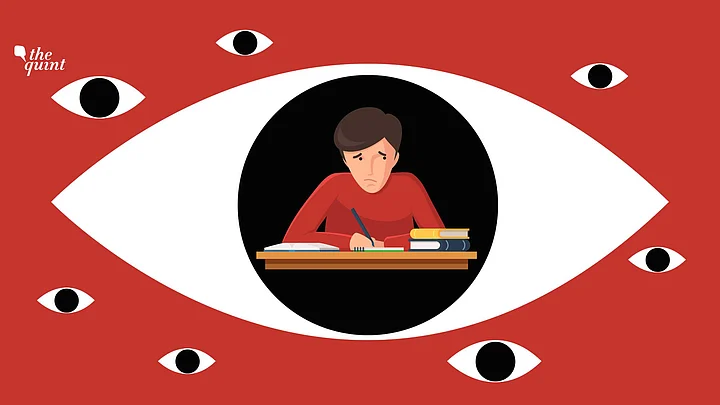With the coronavirus pandemic and its ensuing norms of social distancing putting countries under lockdown, several universities conducting entrance exams have now come up with online tests.
They have resorted to the use of Artificial Intelligence (AI) in combination with proctors, that allow students to take these tests from home, while also eliminating chances of cheating or other malpractices that examinees may adopt.
While the Graduate Management Aptitude Test (GMAT) held last month was one of the first AI Proctored exams to be conducted at a global level. Several private universities like Shiv Nadar University, OP Jindal Global University, and Symbiosis International among others have opted for AI Proctored online entrance exams.
So, how is an AI proctored exam conducted? Can these tests be taken on a tablet or mobile device? Read on.
How does this technology work?
The AI Proctored tests use a combination of artificial intelligence and human proctors. This is because it may not be possible to deploy adequate human proctors for lakhs of students who often take competitive entrance tests.
Since a video of the candidate taking the test is recorded through a webcam, the AI is able to flag or report any suspicious movement or activity.
“Although the number of proctors may vary depending upon the test you are taking, it is the AI that flags any suspicious activity in the first instance, which is then checked by a human proctor,” says Sunil Agarwal, Head of Test Prep division at Pearson India, an Edtech company offering the technology to several universities in India.
Can these tests be taken on a tablet or mobile device?
According to Agarwal, students should take these tests on either a laptop or a desktop. The test is compatible with most browsers. However, students must ensure that they have the following systems in place:
- Operational webcam, which must be kept switched on during the test.
- Operational audio, which too must be switched on.
- An minimum internet speed of 1 MBPS is preferred.
Agarwal, however, adds that Pearson is working on a technology that could allow students to take this from their mobiles and tablets.
What happens after log-in?
The moment a candidate clicks on the given link, the computer will enter into safe browsing mode, which will not allow the candidate to perform any other tasks or open any other window. This effectively means that the “screen gets locked and only the keyboard and mouse are operational.”
After this is done, the candidate’s identity is verified through facial recognition. For this, Pearson uses AI to match the face of the candidate with details provided by the university for which the exams are being conducted.
This can either validate or invalidate the candidate.
What if facial recognition doesn’t work or if the link does not open?
For this purpose, candidates are advised to read all guidelines carefully and log in at least 15 minutes before the scheduled test and check if everything is working fine. “But, in case students are unable to log in, they can call helpline numbers provided by the university or test-conducting agency and sort the problem out,” says Agarwal.
Symbiosis International, which will conduct the Symbiosis Entrance Test in an AI Proctored mode with a different test vendor, has provided students with a checklist, which details the operating system, RAM, internet connectivity and web browsers that are compatible with the test.
What will be counted as a violation?
As mentioned before, the AI technology uses live footage from webcam and audio from the laptop or computer to understand if the student is resorting to unfair means. The AI is trained to catch the following discrepancies.
- If the student moves away from the system, it will be reported.
- If anyone else other than the candidate comes within the camera frame, AI will detect and report this.
- If somebody else is speaking to the student, this will be flagged by AI.
- If the student is reading from a different device hidden from the camera, his eye movements will be flagged.
- If a student tampers with the audio or video, it will be reported and flagged.
What happens when either of these distractions are flagged by the AI?
Generally, AI is responsible for flagging any distraction or discrepancy to the human proctors and will report these incidents to the university conducting the test. The university will then decide on what action is to be taken.
However, it must be remembered that each university may provide a different set of actions to be taken against candidates found or suspected of using unfair means.
What if a drop in bandwidth causes the video to stop?
Wherever possible, the AI will record the entire video and in cases where this isn’t possible, the system will record an image every minute to monitor the student.
In case the video or the audio stops streaming due to poor bandwidth, a student may have the option of taking it up with the university. However each university will have different rules and guidelines and students must check with each for a nuanced understanding.
